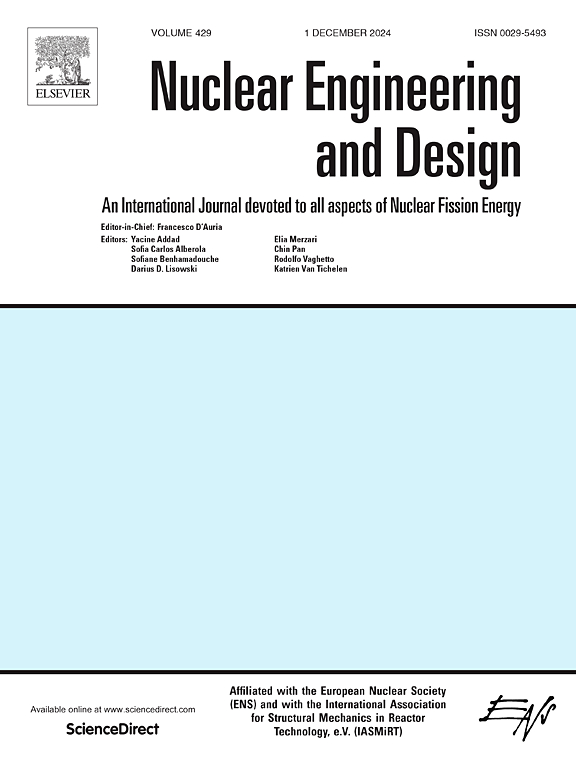Impact assessment of the integration of a generic PEM electrolyser facility into Rivne nuclear station
IF 1.9
3区 工程技术
Q1 NUCLEAR SCIENCE & TECHNOLOGY
引用次数: 0
Abstract
This manuscript presents the outcomes from the impact assessment applied to the onsite integration of a 40 MW hydrogen production plant (HPP) into the protected area of Rivne nuclear power plant (NPP) in Ukraine. The scope of this work is limited to frequency estimation and blast loading characterization applied to three cases of study, representative of the worst-case scenario at different HPP locations. In the framework of the Euratom NPHyCo project, the NPP operator has proposed integration locations and provided corresponding distances to nearby structures with corresponding fragility criteria. The presented study assumes HPP operation at full capacity with allocated NPP electricity as a feedstock.
Hazardous points within the HPP are identified through HAZID (HAZard IDentification) methodology, which is assisted with system reliability analysis based on component failure rates. The identification of accident sequences in the HPP and frequency estimation is accomplished by means of event tree analysis (ETA). The study identifies as the worst-case scenario within the HPP a hydrogen explosion due to the destructive potential over far-range distances via shock wave propagation. In the electrolyser system, an unintended release of hydrogen may trigger a vapour cloud explosion (VCE), whereas in the adjacent hydrogen buffer tank a physical explosion may trigger a shock wave with subsequent projectile generation. The results show that the highest frequency of a hydrogen VCE is in the order of per year following a 1% leak in the separator vessel upstream flange within the gas processing area.
The blast load characterization shows that a hydrogen VCE within the electrolyser facility would not exceed the 10 kPa fragility criterion of nearby safety-related structures. Contrarily, a physical explosion in the 30 kg buffer tank may lead to projectile generation with the potential to reach the standby diesel generators, cooling towers, and turbine building at a distance up to 500 m. The vessel fragments are deemed as soft missiles with high deformability upon impact. Nevertheless, means of protection are proposed to reduce the risk of the coupled facility. The outcomes of the study are meant as recommendations for a subsequent comprehensive safety assessment by the NPP operator.
求助全文
约1分钟内获得全文
求助全文
来源期刊

Nuclear Engineering and Design
工程技术-核科学技术
CiteScore
3.40
自引率
11.80%
发文量
377
审稿时长
5 months
期刊介绍:
Nuclear Engineering and Design covers the wide range of disciplines involved in the engineering, design, safety and construction of nuclear fission reactors. The Editors welcome papers both on applied and innovative aspects and developments in nuclear science and technology.
Fundamentals of Reactor Design include:
• Thermal-Hydraulics and Core Physics
• Safety Analysis, Risk Assessment (PSA)
• Structural and Mechanical Engineering
• Materials Science
• Fuel Behavior and Design
• Structural Plant Design
• Engineering of Reactor Components
• Experiments
Aspects beyond fundamentals of Reactor Design covered:
• Accident Mitigation Measures
• Reactor Control Systems
• Licensing Issues
• Safeguard Engineering
• Economy of Plants
• Reprocessing / Waste Disposal
• Applications of Nuclear Energy
• Maintenance
• Decommissioning
Papers on new reactor ideas and developments (Generation IV reactors) such as inherently safe modular HTRs, High Performance LWRs/HWRs and LMFBs/GFR will be considered; Actinide Burners, Accelerator Driven Systems, Energy Amplifiers and other special designs of power and research reactors and their applications are also encouraged.
 求助内容:
求助内容: 应助结果提醒方式:
应助结果提醒方式:


